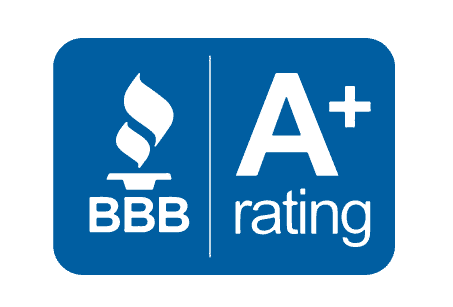
By Trafalgar’s Editorial Team
This Content is Created By Kinga Burjan, M.A., R.P.
Diaphragmatic Breathing: Abdominal breathing or Belly Breathing
Today’s video is about diaphragmatic breathing.
Another name for a diaphragmatic breathing is called abdominal breathing or belly breathing, and sometimes even the three-part breath.
As the name suggests, your breathing down into the belly area versus breathing up here in your chest. I just want to take a moment to check in with your body and to recognize if you’re breathing from your belly? Is your belly moving at all? Or are you breathing primarily from your chest?
If you’re breathing primarily from your chest, then this can result in shallow breathing, and it can sometimes heighten our feelings of anxiety because the brain thinks we don’t have enough oxygen and then begins to panic.
What’s the purpose of breathing from the diaphragm?
So what’s the point? What’s the purpose of breathing from the diaphragm? The main purpose is it activates the body’s relaxation response. So this is our body’s natural ability to relax itself. And the more you practice it, the easier it is for your body to relax.
Since it is using the diaphragm to breathe, it actually strengthens the diaphragm. And the diaphragm, if you’re not aware, is actually a large muscle located at the base of the lungs. So as the person inhales and uses their diaphragm, the diaphragm contracts and moves downward. And this creates more space in the lungs to fill with air.
And by default, if we’re able to fill our lungs with more air, we also take more oxygen. And then as a person exhales, their diaphragm relaxes, and as the diaphragm relaxes, it moves upwards and helps the air move out of the lungs.
So a disclaimer, if you do have asthma or COPD, please be careful when you’re first practicing diaphragmatic breathing and don’t overdo it. Listen to your body, and if for some reason, regardless, if you have asthma or COPD (Chronic Obstructive Pulmonary Disease) or not. If you ever feel a sharp pain in any exercise like this, please stop, don’t force it and follow up with a health professional before proceeding.
How to Do It?
We’ll start first by sitting upright so you can sit comfortably in a chair or you can sit with your legs crossed on the floor. If you’re sitting on a chair, place both feet on the floor so your legs are separate and then be aware of your spine.
Ideally, you want to lengthen the spine, relax the shoulders. The top of the head is kind of parallel to the chair, and you can tuck your chin in slightly rather than your head leaning back.
Okay, so what this does is creates more space. It opens our lungs so that we can take more oxygen. Now what I’d like you to do is place one hand on your collarbone and one hand on your belly and just notice where it’s rising as you inhale.
For some people, it might be the chest. Some people, the belly. Just take a moment to notice. Now I’d like you to place both hands on your belly and what you can even do just to really see what’s happening on the belly is to put the tips of the middle finger together. Then place these over your belly button and pull the belly button in toward your spine. Now, as you inhale, let your belly expand. Until it’s possible the fingertips come apart and then as you exhale, pull the belly button in.
Again, inhale, fill up the belly and exhale belly holes in. One more time inhale belly fills up. Exhale, pull the belly button in.
For some people, that might feel uncomfortable or abnormal, but know that this is a way to activate your diaphragmatic breathing as well as your relaxation response, so just practice that at your own pace until you get more and more comfortable.
Now the next step will place one hand back on the belly, the other one on the collarbone. I want you to inhale again and as you inhale, let your belly expand. And then as the air in your lungs fills up notice, the collarbone lifts just slightly not as much as the belly, though, and as you exhale, you’ll notice the collarbone relaxes and then you can pull the belly button in to get the last bit of air out.
Again, inhale, fill up the belly. Then the collarbone lifts, exhale, collarbone relaxes, hold the belly button in one more time, inhale, fill up the belly. Collarbone lifts exhale. Chest relaxes, belly relaxes.
So again, as your first doing it, it may feel kind of abnormal or foreign to you. Keep practicing and don’t overdo it the first time. If you’re not used to having as much oxygen uptake in your breath, you can feel a bit lightheaded. So I suggest start at three rounds, then increase it and keep increasing it until you don’t feel like you’re feeling lightheaded.
So again, if you are lightheaded, just be careful. Before you get off the chair, you might want to drink some water. You might want to take a moment to sit comfortably and let your breath relax.
Okay, and then as you do the long, deep breathing or the diaphragmatic breath, you don’t always have to have your hands on your belly or your collarbone. This is just one way to check in another way.
Another way to remind yourself about how to do diaphragmatic breathing is a lot of people get confused about which one gets filled up first. So if I’ll grab my cup here, if you imagine water being poured into this cup, the water actually fills the cup up from the bottom first and then fills it to the top.
So I want you to imagine that as you inhale, as the water goes in and it comes to the bottom and then to the top and then, as you exhale, the water comes out the top first and then finishes the bottom.
Good thing, I drank my water and I don’t have any left in there to show you. Okay, so let’s move on now to lying down. So for some people, practicing diaphragmatic breathing is actually a lot easier to start lying down.
So you’re welcome to do that. Find a spot on the floor, on a yoga mat, on your bed that’s comfortable. Where you have good support and you might even want to bend your knees slightly to help support your lower back.
So as you’re on the floor, just relax your shoulders and just like before place one hand on the chest and one on your belly. Again, notice as you inhale which hand is rising, is it one, is it both? And again, same idea as you inhale, let your belly expand. And then the chest lifts and then as you exhale, the collarbone relaxes, the belly relaxes.
Again, inhale filling up the belly. Then the collarbone lifts and then exhale, the collarbone relaxes and the belly relaxes. And one more time. Okay, so you can do this right before bed as well to help relax your body and your mind.
So I’d like you to take a moment to notice what that was like for you. Was it easier or more difficult as you did the diaphragmatic breathing, sitting upright or lying down? Did you feel any discomfort? Did you feel any relaxation? Did you notice your thoughts wandering to any particular place?
So no matter what activity you do, it’s always a great idea to check in with yourself without judgment, just to notice. Well, you know what? Sitting this way kind of activated some memories in me or feelings in me, or it was really hard to stay present.
But bringing myself back to the breath helped me stay present. So whatever that is, life is a journey of self-discovery. So I hope that this video has helped you become more in tune with your breath and your body, and that you were able to take a tool out of this that you can apply in your everyday life.
So again, you don’t have to have your hands on your belly or your chest as you’re practicing this, you can practice this breathing no matter where you are. Whether you’re sitting in the car, on a train, in class, standing in line or wherever this takes you, this is a free tool that you can utilize within yourself.






